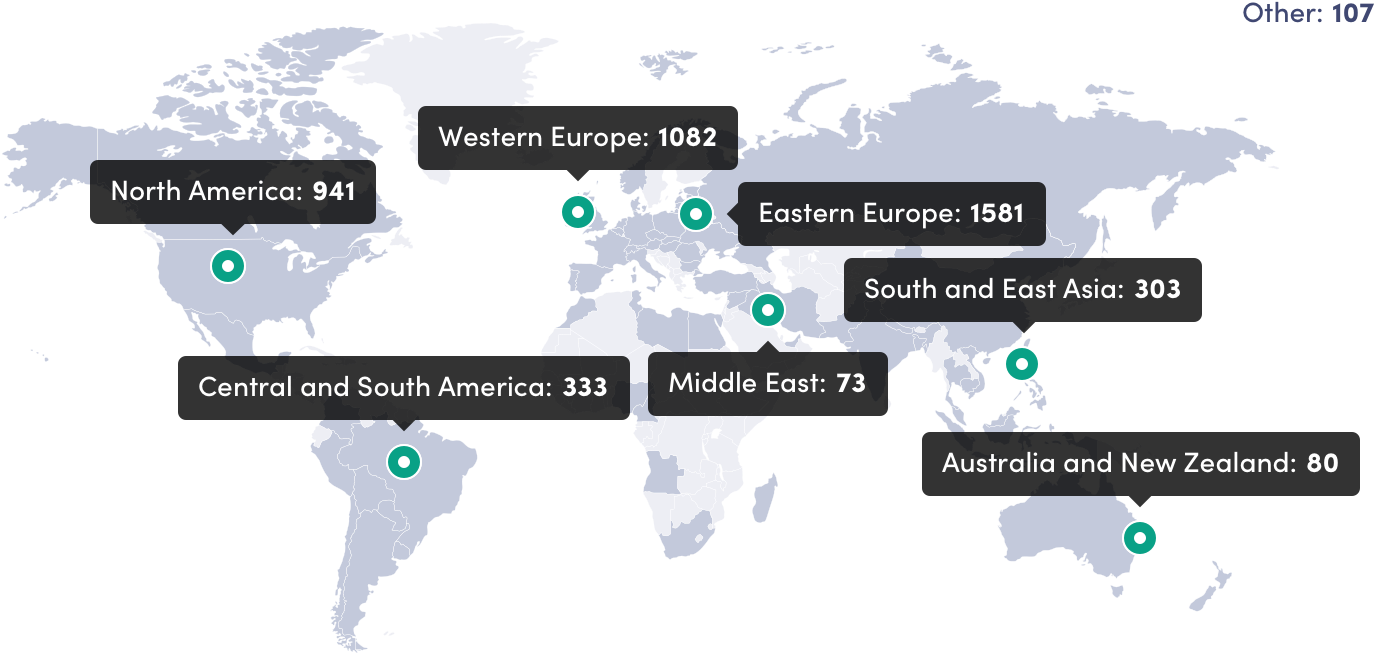Chapter 01: Developers
Everyday frontend development according to 4,500 experts
When we started thinking about the State of Frontend 2020 report, I had one goal in mind: to find out what the everyday job of a frontend developer looks like. Considering that there are thousands of frontend devs around the world, that goal seemed pretty unrealistic. But hey man – once again, the frontend community surprised us all!
In just a few weeks, exactly 4,500 frontend developers took part in our State of Frontend survey! I know the number first hand because I was literally sitting with my finger on a button, observing the growing numbers and waiting for the perfect moment to close the survey. I don’t know about you but for me, the number is pretty perfect – as with 4,500 folks filling in the survey, the State of Frontend 2020 is the biggest report out there focused solely on front-end development.
Where do the respondents come from?


Total answers 4500
All in all, we ended up with over four thousand frontend devs telling us about their everyday job, the frameworks that they use, the frameworks that they would like to use (but, for example, the boss won’t let them) and about their thoughts on the recent frontend development trends. The results of the survey are awesome – some of them surprising, many of them inspiring, all of them showing how the everyday front-end development looks.
To make all this data more accessible, we invited leading software development authorities to comment on the results. With their incredible know-how and big-picture perspective, they made the State of Frontend 2020 report what it is – the most up-to-date source of knowledge on modern front-end development.
So, I advise you to stop reading my brag-about introduction, take a look at the table of contents, choose the topics that interest you the most and find out what both the developers and the authorities have to say about it. You won’t be disappointed.
For how long have you been in the frontend development game?
How would you describe your seniority?
How big is the company you are working in?
















